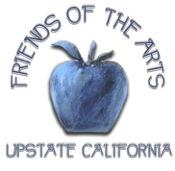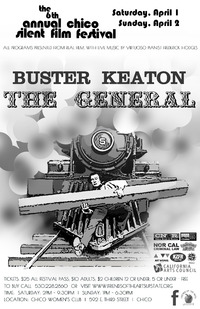Upstate Community Enhancement Foundation - Friends of the Arts
6th Annual Chico Silent Film Festival
Saturday, April 1 - Sunday, April 2, 2017
REEL Film. REAL music played by esteemed piano virtuoso Frederick Hodges
- $10 - per film block (Blocks include multiple films - see timeframes below)
- $2 - children 12 & under
- $25 - all-festival pass
- FREE for children 5 & under
Location:
Chico Women’s Club
592 E. Third St.
Tickets:
SCHEDULE
Saturday, April 1
2PM Comedy Classics
The Adventurer (1917, Mutual) starring Charlie Chaplin. Charlie escapes from prison. After rescuing a girl and her mother from drowning, Charlie is invited to their home where a big party is held and he is treated like a hero. However, as a result Charlie's photo is printed in the newspapers and the prison guards come after him. 20 minutes
Be Reasonable (1921, Mack Sennett) starring Billy Bevan. A woman wakes up to find a man in her house rummaging through her belongings which sparks a manic police chase across the town. 20 minutes.
 His Wooden Wedding (1925, Hal Roach) starring Charlie Chase. A few moments before Charley is going to marry, a "friend", who is jealous, gives him an anonymous note, stating that the bride has a wooden leg. Charley cancels the wedding, but agrees to leave her his very expensive engagement ring. His "friend" sees his chance to get the ring and tells her otherwise. But when he tries to hide the ring in his top hat, Charley finds out that he has mistakenly taken the wrong hat - the ring is in Charley's hat. And he decides to go on a cruise. The bride, who has found out the reason for Charley's change of mind follows them on her father's yacht. 20 minutes
His Wooden Wedding (1925, Hal Roach) starring Charlie Chase. A few moments before Charley is going to marry, a "friend", who is jealous, gives him an anonymous note, stating that the bride has a wooden leg. Charley cancels the wedding, but agrees to leave her his very expensive engagement ring. His "friend" sees his chance to get the ring and tells her otherwise. But when he tries to hide the ring in his top hat, Charley finds out that he has mistakenly taken the wrong hat - the ring is in Charley's hat. And he decides to go on a cruise. The bride, who has found out the reason for Charley's change of mind follows them on her father's yacht. 20 minutes
Liberty (1929, Hal Roach) starring Laurel and Hardy. Two escaped convicts (Laurel & Hardy) change clothes in the getaway car, but wind up wearing each other's pants. The rest of the film involves their trying to exchange pants, in alleys, in cabs and finally high above the street on the girders of a construction site. 20 minutes.
4PM To The Rescue!
The Kid Reporter (1923, Century Films) starring Baby Peggy. The 'secretary' of a busy newspaperman is revealed to be a loveable small child, Baby Peggy. When a rich woman's pearl necklace is stolen, Baby Peggy's employer promises to make the reporter who cracks the case Editor-in-Chief. The little girl seizes the opportunity, and -- several disguises and chases later, with the grudging aid of the office-boy -- duly returns with the jewels to achieve promotion, with all the adults scurrying to serve her. 20 minutes.
The Night Cry (1926, Warner Bros.) starring Rin Tin Tin. Ewart Adamson (1881-1945), born in Dundee, Scotland, adapted a book to the screen. Although at the time the story of a Nevada Sheep Rancher was said to true, it was later found to be fiction. Rin Tin Tin, of course, was the chief attraction of the movie, but he was certainly ably supported by all the human players -- and by another non-human player whose presence motivated the heart-stopping scene for which this film unique. 70 minutes
7:30 PM
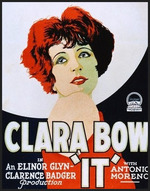 The Best Man (1928, Mack Sennett) Starring Billy Bevan. A bride and groom are all set to get married, but they can't until the best man shows up. When the best man eventually does show up, he causes a few problems since he ran through some tar just before entering the church. The groom doesn't seem to mind too much, just as long as the best man brought the ring, which he did. But as the wedding proceeds, that sticky tar just can't help but get the best man into one disastrous incident after another, including with the ring. 20 minutes
The Best Man (1928, Mack Sennett) Starring Billy Bevan. A bride and groom are all set to get married, but they can't until the best man shows up. When the best man eventually does show up, he causes a few problems since he ran through some tar just before entering the church. The groom doesn't seem to mind too much, just as long as the best man brought the ring, which he did. But as the wedding proceeds, that sticky tar just can't help but get the best man into one disastrous incident after another, including with the ring. 20 minutes
It (1927, Famous Players – Lasky) Starring Clara Bow. Shopgirl Betty Lou has designs on Cyrus Waltham, the handsome owner of the department store where she works. Waltham, though, doesn't even know Betty Lou is around. In hopes of attracting Waltham's attention, she accepts a date with his best friend, Monty, under the condition that they dine at the Ritz, where Waltham also has a dinner date that evening. Her plan works and in no time at all she and Waltham are contemplating marriage. The romance cools when a newspaper reporter mistakenly writes a story depicting Betty Lou as an unwed mother. 72 Minutes.
Sunday, April 2
1PM Comedy Classics
 "The Hazards of Helen" (1915, Kalem) Starring Helen Holmes. Episode 9. The Leap From The Water Tower. Rand, a vengeful discharged fireman, tampers with the airbrakes of a large freight locomotive making them useless on the long descent from the summit of Pine Hill to Lone Point the following day. Learning of the impending peril, Helen dashes to a water tower under which the train must pass, climbs out on the spout, leaps onto the roof of one of the cars, and warns the engineer in time. 15 minutes
"The Hazards of Helen" (1915, Kalem) Starring Helen Holmes. Episode 9. The Leap From The Water Tower. Rand, a vengeful discharged fireman, tampers with the airbrakes of a large freight locomotive making them useless on the long descent from the summit of Pine Hill to Lone Point the following day. Learning of the impending peril, Helen dashes to a water tower under which the train must pass, climbs out on the spout, leaps onto the roof of one of the cars, and warns the engineer in time. 15 minutes
THE GENERAL – (1926, Buster Keaton Productions) Starring Buster Keaton. The two things engineer Johnny Gray (Buster Keaton) loves most in the world are his Southern belle sweetheart and his locomotive. When Northern spies steal the latter, the intrepid Confederate single-handedly takes on the entire Union army in order to get it back. Against a backdrop of magnificently photographed Civil War battle scenes unfolds one of the great chases in movie history. Set almost entirely aboard moving trains, Keaton's THE GENERAL is physical comedy refined to elegant perfection and widely considered to be the actor-director's greatest film. 70 minutes
3PM
 "The Hazards of Helen" (1915, Kalem) Starring Helen Holmes. Episode 33. In Danger's Path. Helen is captured by two burglars who throw her into a refrigerator car; finding a meat hook, she chops her way into the ice chamber and reaches the top of the train in time to avert a collision of two trains. 15 minutes
"The Hazards of Helen" (1915, Kalem) Starring Helen Holmes. Episode 33. In Danger's Path. Helen is captured by two burglars who throw her into a refrigerator car; finding a meat hook, she chops her way into the ice chamber and reaches the top of the train in time to avert a collision of two trains. 15 minutes
Captain January (1924, Sol Lesser Productions) Starring Baby Peggy. A lighthouse keeper finds a little girl who is washed ashore tied to some wreckage. He adopts her and they become inseparable. Eventually her real family finds her and tries to take her away. 70 minutes
5 PM
"The Hazards of Helen" (1915, Kalem) Starring Helen Gibson. Episode 76. The Governor's Special. Two crooks accidently release the brakes on a sleeping car containing the Governor's daughter. The car races down the track soon to meet up with a locomotive coming in the opposite direction. Helen must find a way to stop the two from colliding. 15 Minutes.
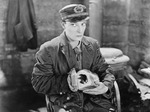 Steamboat Bill, Jr. (1928, Buster Keaton Productions) Starring Buster Keaton. Following through on a promise to his mother, William Canning Jr. goes to River Junction to meet his father who has not seen him since he was a child. The younger Canning isn't quite what the elder was expecting but the old man has bigger problems. He's being put out of business by J.J. King, who not only owns the local hotel and bank, but has recently introduced a new paddle wheel steamer that puts Cannings older boat, the Stonewall Jackson, to shame. Bill Jr. and Kitty King take a liking to each other much to the dismay of both of their fathers.
Steamboat Bill, Jr. (1928, Buster Keaton Productions) Starring Buster Keaton. Following through on a promise to his mother, William Canning Jr. goes to River Junction to meet his father who has not seen him since he was a child. The younger Canning isn't quite what the elder was expecting but the old man has bigger problems. He's being put out of business by J.J. King, who not only owns the local hotel and bank, but has recently introduced a new paddle wheel steamer that puts Cannings older boat, the Stonewall Jackson, to shame. Bill Jr. and Kitty King take a liking to each other much to the dismay of both of their fathers.
Tickets available now!
Call 530.228.2860 or buy online!
Cost details:
- $10 - per film block (Blocks include multiple films - see timeframes above)
- $2 - children 12 & under
- $25 - all-festival pass
- FREE for children 5 & under
Location: Chico Women’s Club - 592 E. 3rd St. in Chico
Our Chico Silent Film Festival Artists
David Shepard
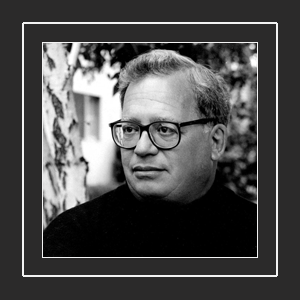
By WILLIAM GRIMES, New York Times, February 5, 2017
David Shepard, a film preservationist who restored hundreds of discarded, hidden or forgotten films by masters like Charlie Chaplin, Buster Keaton and F. W. Murnau and packaged rarities for the consumer market, died on Jan. 31 in Medford, Ore. He was 76.
The cause was cancer, said his brother, Donald.
The era of Valentino and Fairbanks had been over for decades when Mr. Shepard, barely in his teens, began buying old films, reel by reel, with money earned from his paper route. He had been bitten by the bug when his uncle Myron, a photographer in the Signal Corps, brought home a projector and a boxful of films from France after World War II — abridged versions of Fritz Lang’s “Metropolis” and Georges Méliès’s experimental “A Trip to the Moon,” among others. They kindled an enthusiasm that only grew with time.
Working for the American Film Institute and later for Blackhawk Films, which reproduced old films for the collectors’ market, Mr. Shepard began searching out movies that had been languishing in studio vaults or private collections and bringing them in for restoration.
By trial and error, he developed techniques now used widely in commercial preservation laboratories. In 1989, after acquiring Blackhawk’s library, he created his own company, Film Preservation Associates.
Over the years, he restored or made available many of the silent films now found in DVD and video libraries, including the 12 shorts that Charlie Chaplin made for the Mutual Film Corporation in 1916 and 1917, Murnau’s 1927 masterpiece “Sunrise,” all of Buster Keaton’s independent films of the 1920s, and Soviet silent films from the same decade. For many films, he commissioned new musical scores.
One of his most stunning efforts was the restoration of the French filmmaker Abel Gance’s “La Roue” (“The Wheel”). Originally shown in 1923 over three days, it was cut down to two and half hours for commercial distribution, and the original was subsequently lost. Mr. Shepard, with the archivist Eric Lange, reassembled a four-and-a-half-hour version from five different prints, released in 2008 by Flicker Alley.
“If you’ve seen a superior print of a film by Chaplin or Keaton, Griffith or Murnau, chances are David had a hand in restoring it,” the film critic Leonard Maltin recently wrote on his blog.
“He was able to build an audience for silent film and keep it going,” Jeffrey Vance, a film historian who has written books on Chaplin, Keaton and Harold Lloyd, said in an interview. “He made silent films available to everyone.”
David Haspel Shepard was born on Oct. 22, 1940, in Manhattan and grew up, from the age of 11, in Tenafly, N.J. His father, Bertram, was an executive with the Grand Union grocery chain; his mother, the former Marjorie Markley, was a homemaker.
He was film crazy from his earliest years, with a connoisseur's bent that his father indulged by taking him to the film programs at the Museum of Modern Art. After buying a 16-millimeter projector at 12, he discovered that film rental companies, hard hit by television, were selling off their stocks, and he began acquiring films for $1 a reel.
In junior high and high school, he filmed football games for the coaches to study. In the off-season, he used the camera to make his own films with student actors.
Mr. Shepard earned a bachelor’s degree in philosophy and religion from Hamilton College in Clinton, N.Y., in 1962 and a master’s in American studies from the University of Pennsylvania a year later.
He was teaching theater and film at Pennsylvania State University in 1968 when the fledgling American Film Institute hired him to seek out historically significant films from studios and collectors, with the aim of having them donated to the institute for preservation and archiving. In an early coup, he persuaded Paramount Pictures to turn over the 200 silent features it had in storage in Fort Lee, N.J.
After five years, he went to work for Blackhawk, in Davenport, Iowa, as head of product development. It was there that he led the project to acquire and restore Chaplin’s Mutual shorts, in which Chaplin’s Little Tramp character evolved from a purely slapstick figure to a rich, comedic personality.
Mr. Shepard was hired by the Directors Guild of America in 1976 to oversee special projects, notably a series of oral histories with directors like King Vidor and Henry King. In the 1980s, he began teaching film history at the University of California, Los Angeles, and the School of Cinema and Television at the University of Southern California.
In 1977, he married Kimberly Fetter, who had worked with him at Blackhawk. The marriage ended in divorce. In addition to his brother, he is survived by a son, Ben Baker.
Pinched by competition from the video market, Blackhawk Films closed in 1987 and offered Mr. Shepard its equipment for scrap value. He bought an industrial building to house it, and to pay off the building he began doing commercial preservation and restoration work. Soon after, he acquired Blackhawk’s film library, which became the basis for Film Preservation Associates. The company worked with distributors like Kino International and Flicker Alley.
Many of the titles were released in box sets, including “Masterworks of D. W. Griffith,” “The Art of Buster Keaton,” “The Golden Age of German Cinema,” “Cecil B. De Mille: The Visionary Years,” “Douglas Fairbanks: King of Hollywood” and “Georges Méliès: First Wizard of the Cinema.”
In 2006, the National Society of Film Critics gave its Film Heritage Award to Mr. Shepard and his collaborators — Anthology Film Archives and the film restorer Bruce Posner — for the seven-disc collection “Unseen Cinema: American Avant-Garde Films.”
Mr. Shepard, who lived in Hat Creek, Calif., had his fair share of serendipity along the way. Raoul Walsh’s first film, “Regeneration” (1915), sometimes credited as the first gangster feature, simply fell into his lap when a meter reader from Missoula, Mont., contacted him about some films he had stumbled across in a building scheduled for demolition.
“When he went to read the meters for the last time, the tenants were gone but the films were still there, so he took them,” Mr. Shepard told The Los Angeles Times in 1995. “He called me looking for someone to preserve them.”
Better yet, he told the newspaper in 1999, while he was visiting a colleague in France in the early 1970s, a boy rode up on a bicycle balancing a box of films on the handlebars. He had recently retrieved them from the family farm in Normandy. Among the films was an original print of “The Tramp,” which Chaplin had made at Essanay Studios in 1915.
“You couldn’t stage this in a bad play,” Mr. Shepard said.
Frederick Hodges
The virtuoso who loved silence
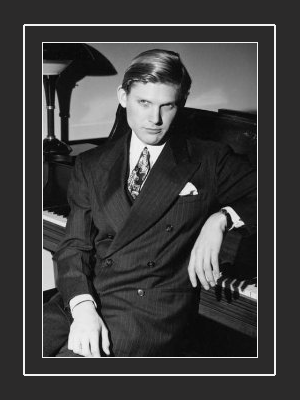
Hailed by the press as one of the best ragtime pianists in the world, Frederick Hodges is sought after by today's foremost orchestras, festivals, conductors, and collaborative musicians.
His absolute artistry, virtuosity and charisma have brought him to the world's most renowned stages numerous times, leaving audiences around the globe repeatedly captivated. Mr. Hodges has made regular appearances at major ragtime and jazz festivals throughout the US as well as world tours with the Royal Society Jazz Orchestra under the baton of conductor Don Neely.
Renowned as a pianist and singer, Frederick Hodges is recognized by audiences around the world for his mastery of diverse repertoire from Liszt to Gershwin. He has established a reputation as a truly versatile artist equally sought after as soloist, singer, guest soloist with the California Pops Orchestra, and dance band pianist. He has appeared on national television, radio, and in several Hollywood films. He is also a sought-after silent film accompanist for both live performances and on DVD. He performs regularly at the Niles Essanay Silent FilmMuseum.
'One of my most cherished musical pleasures is accompanying silent films. My drive for complete authenticity when creating silent films scores is motivated by my deep love, appreciation, and commitment to the artistic and musical culture of the silent film era.
There are many ways to provide musical accompaniment to silent films, but I have adopted the following philosophy: The experience of watching a silent film today is enhanced when the accompaniment reproduces to the greatest extent possible the style of accompaniment that the film in question would have received in its day by the best cinema musicians.
Accordingly, a film that was released in December 1926, for instance, deserves to have a musical accompaniment that is exactly like the accompaniment that a fine cinema pianist or organist would have given it in December 1926. This means that all the music used in compiling the score will have been published prior to December 1926. I find this approach deeply satisfying because it honors the silent film and shows the deepest respect for the era in which the film was produced. This approach enables modern audiences to imagine that they have been transported back in time. Thus, not only can they enjoy the film on its own merits, but they can experience the added richness of a live musical recreation.
I compile scores for silent films exactly the same way that cinema pianists and organists compiled scores back in the days of silent films. There is really no mystery to it. Movie studios frequently hired composers and arrangers to produce thematic cue sheets, which were issued with each film and distributed to cinema musicians. These thematic cue sheets told the pianist what to play and when to play it. The "cue" in "cue sheet" was a point in the film that signaled the musician that it was time to change the music in order to support effectively the shifting action on the screen. I am very fortunate to have a large collection of original cue sheets for silent films. In those instances where I do not have an original thematic cue sheet for a film that I have been hired to accompany, I create my own cue sheet modeled on the same pattern used for published sheets, using a mixture of classical music, semi-classical, and popular songs.'
Friends of the Arts brings the Butte County community together by hosting events such as the Chico Silent Film Festival, Oroville Salmon Festival, Chico Palio, ARTOBERFEST and the Nor-Cal Jazz Festival to name a few of the arts council's primary activities. This partner to the California Arts Council also runs BCAC.tv - Chico's public access television station.
2:00 PM Comedy Classics
The Adventurer (1917, Mutual) starring Charlie Chaplin. Charlie escapes from prison. After rescuing a girl and her mother from drowning, Charlie is invited to their home where a big party is held and he is treated like a hero. However, as a result Charlie's photo is printed in the newspapers and the prison guards come after him. 20 minutes
Be Reasonable (1921, Mack Sennett) starring Billy Bevan. A woman wakes up to find a man in her house rummaging through her belongings which sparks a manic police chase across the town. 20 minutes.
His Wooden Wedding (1925, Hal Roach) starring Charlie Chase. A few moments before Charley is going to marry, a "friend", who is jealous, gives him an anonymous note, stating that the bride has a wooden leg. Charley cancels the wedding, but agrees to leave her his very expensive engagement ring. His "friend" sees his chance to get the ring and tells her otherwise. But when he tries to hide the ring in his top hat, Charley finds out that he has mistakenly taken the wrong hat - the ring is in Charley's hat. And he decides to go on a cruise. The bride, who has found out the reason for Charley's change of mind follows them on her father's yacht. 20 minutes
Liberty (1929, Hal Roach) starring Laurel and Hardy. Two escaped convicts (Laurel & Hardy) change clothes in the getaway car, but wind up wearing each other's pants. The rest of the film involves their trying to exchange pants, in alleys, in cabs and finally high above the street on the girders of a construction site. 20 minutes.
4:00 PM To The Rescue!
The Kid Reporter (1923, Century Films) starring Baby Peggy. The 'secretary' of a busy newspaperman is revealed to be a loveable small child, Baby Peggy. When a rich woman's pearl necklace is stolen, Baby Peggy's employer promises to make the reporter who cracks the case Editor-in-Chief. The little girl seizes the opportunity, and -- several disguises and chases later, with the grudging aid of the office-boy -- duly returns with the jewels to achieve promotion, with all the adults scurrying to serve her. 20 minutes.
The Night Cry (1926, Warner Bros.) starring Rin Tin Tin. Ewart Adamson (1881-1945), born in Dundee, Scotland, adapted a book to the screen. Although at the time the story of a Nevada Sheep Rancher was said to true, it was later found to be fiction. Rin Tin Tin, of course, was the chief attraction of the movie, but he was certainly ably supported by all the human players -- and by another non-human player whose presence motivated the heart-stopping scene for which this film unique. 70 minutes
7:30 PM
The Best Man (1928, Mack Sennett) Starring Billy Bevan. A bride and groom are all set to get married, but they can't until the best man shows up. When the best man eventually does show up, he causes a few problems since he ran through some tar just before entering the church. The groom doesn't seem to mind too much, just as long as the best man brought the ring, which he did. But as the wedding proceeds, that sticky tar just can't help but get the best man into one disastrous incident after another, including with the ring. 20 minutes
It (1927, Famous Players – Lasky) Starring Clara Bow. Shopgirl Betty Lou has designs on Cyrus Waltham, the handsome owner of the department store where she works. Waltham, though, doesn't even know Betty Lou is around. In hopes of attracting Waltham's attention, she accepts a date with his best friend, Monty, under the condition that they dine at the Ritz, where Waltham also has a dinner date that evening. Her plan works and in no time at all she and Waltham are contemplating marriage. The romance cools when a newspaper reporter mistakenly writes a story depicting Betty Lou as an unwed mother. 72 Minutes.
Sunday April 2nd
1:00 PM Comedy Classics
"The Hazards of Helen" (1915, Kalem) Starring Helen Holmes. Episode 9. The Leap From The Water Tower. Rand, a vengeful discharged fireman, tampers with the airbrakes of a large freight locomotive making them useless on the long descent from the summit of Pine Hill to Lone Point the following day. Learning of the impending peril, Helen dashes to a water tower under which the train must pass, climbs out on the spout, leaps onto the roof of one of the cars, and warns the engineer in time. 15 minutes
THE GENERAL – (1926, Buster Keaton Productions) Starring Buster Keaton. The two things engineer Johnny Gray (Buster Keaton) loves most in the world are his Southern belle sweetheart and his locomotive. When Northern spies steal the latter, the intrepid Confederate single-handedly takes on the entire Union army in order to get it back. Against a backdrop of magnificently photographed Civil War battle scenes unfolds one of the great chases in movie history. Set almost entirely aboard moving trains, Keaton's THE GENERAL is physical comedy refined to elegant perfection and widely considered to be the actor-director's greatest film. 70 minutes
3:00 PM
"The Hazards of Helen" (1915, Kalem) Starring Helen Holmes. Episode 33. In Danger's Path. Helen is captured by two burglars who throw her into a refrigerator car; finding a meat hook, she chops her way into the ice chamber and reaches the top of the train in time to avert a collision of two trains. 15 minutes
Captain January (1924, Sol Lesser Productions) Starring Baby Peggy. A lighthouse keeper finds a little girl who is washed ashore tied to some wreckage. He adopts her and they become inseparable. Eventually her real family finds her and tries to take her away. 70 minutes
5:00 PM
"The Hazards of Helen" (1915, Kalem) Starring Helen Gibson. Episode 76. The Governor's Special. Two crooks accidently release the brakes on a sleeping car containing the Governor's daughter. The car races down the track soon to meet up with a locomotive coming in the opposite direction. Helen must find a way to stop the two from colliding. 15 Minutes.
Steamboat Bill, Jr. (1928, Buster Keaton Productions) Starring Buster Keaton. Following through on a promise to his mother, William Canning Jr. goes to River Junction to meet his father who has not seen him since he was a child. The younger Canning isn't quite what the elder was expecting but the old man has bigger problems. He's being put out of business by J.J. King, who not only owns the local hotel and bank, but has recently introduced a new paddle wheel steamer that puts Cannings older boat, the Stonewall Jackson, to shame. Bill Jr. and Kitty King take a liking to each other much to the dismay of both of their fathers.



